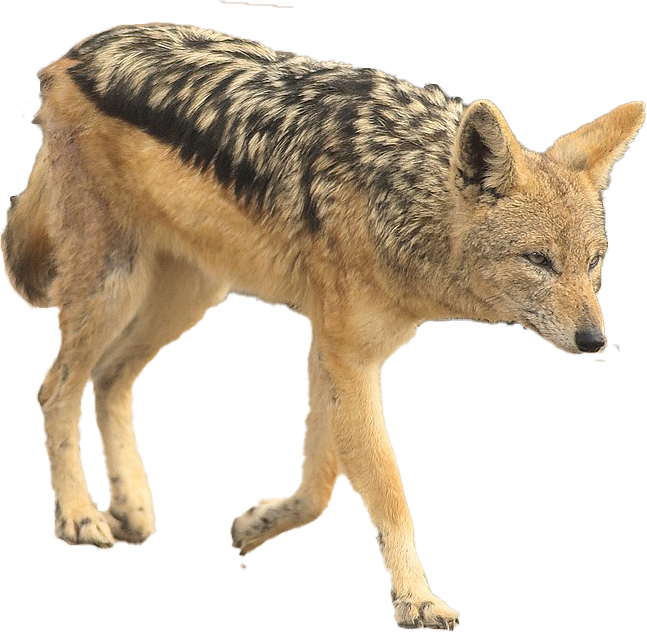
Description:
It is a fox-like animal with a reddish brown to tan coat and a black saddle that extends from the shoulders to the base of the tail. A long, black stripe extending along the flanks separates the saddle from the rest of the body, and can be used to differentiate individuals. With a slender body, long legs, and large ears. It is similar to the closely related side-striped jacka though its skull and dentition are more robust and the incisors much sharper. It weighs 6–13 kg, stands 38–48 cm at the shoulder, and measures 67.3–81.2 cm in body length.
Habitat:
Native to South Africa, Namibia, Botswana and Zimbabwe. The other area is along the eastern coastline, including Kenya, Somalia, Djibouti, Eritrea, and Ethiopia. It is persecuted as a livestock predator and rabies vector.The species generally shows a preference for open areas with little dense vegetation, though it occupies a wide range of habitats, from arid coastal deserts to areas with more than 2000 mm of rainfall. It also occurs in farmlands, savannas, open savanna mosaics, and alpine areas.
Diet:
The black-backed jackal has a wide array of food sources, feeding on small to medium-sized animals, as well as plant matter and human refuse. Their diet includes invertebrates, such as beetles, grasshoppers, crickets, termites, millipedes, spiders, and scorpions. Mammals are eaten such as rodents, hares, and young antelopes up to the size of topi calves. They also feed on carrion, birds, bird eggs, lizards and snakes. In coastal areas, they feed on beached marine mammals, seals, fish, and mussels. They also consume occasionally fruits and berries.
Behavior:
It is a monogamous animal, whose young may remain with the family to help raise new generations of pups.